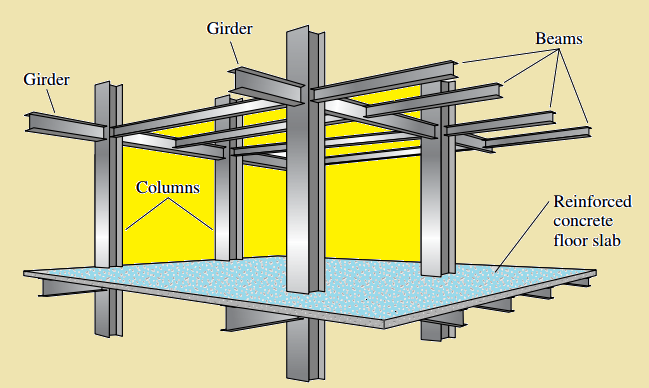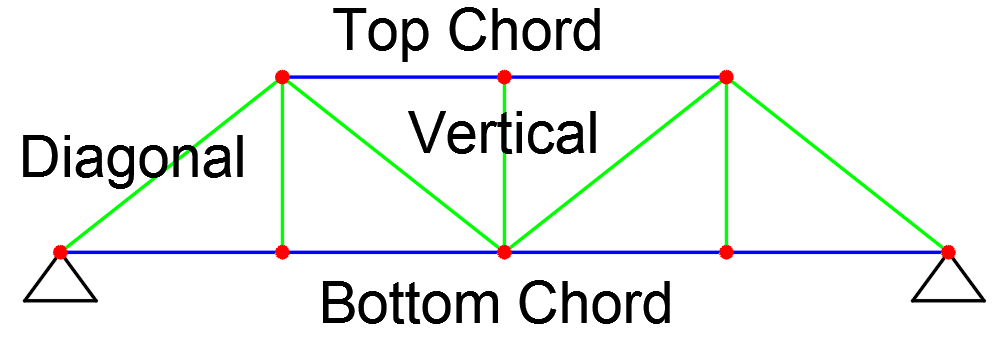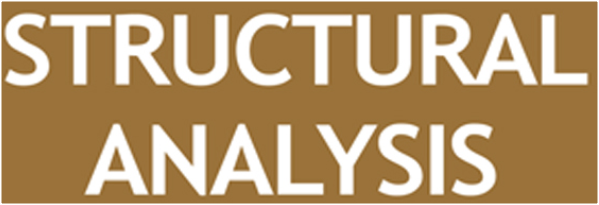Structural Elements and Systems: All structural systems are composed of elements. The following are considered to be the primary elements in a structure:
1- Ties: those members that are subjected to axial tension forces only. Load is applied to ties only at the ends. Ties cannot resist flexural forces.
2- Struts: those members that are subjected to axial compression forces only. Like ties, struts can be loaded only at their ends and cannot resist flexural forces.
3- Beams and Girders: those members that are primarily subjected to flexural forces. They usually are thought of as being horizontal members that are primarily subjected to gravity forces; but there are frequent exceptions (such as inclined rafters).
4- Columns: those members that are primarily subjected to axial compression forces. A column may be subjected to flexural forces also. Columns usually are thought of as being vertical members, but they may also be inclined.
5- Diaphragms: structural components that are flat plates. Diaphragms generally have very high in-plane stiffness. They are commonly used for floors and shear resisting walls. Diaphragms usually span between beams or columns. They may be stiffened with ribs to better resist out-of-plane forces.
Structural components are assembled to form structural systems such as typical framed structures. A building frame is shown in Figure 1. In this figure, a girder is considered to be a large beam with smaller beams framing into it.

A truss is a special type of structural frame. It is composed entirely of struts and ties. That is to say, all of its components are connected in such a manner that they are subjected only to axial forces. All of the external loads acting on trusses are assumed to act at the joints and not directly on the components, where they might cause bending in the truss members (Figure 2).

There are other types of structural systems. These include fabric structures (e.g., tents and outdoor arenas) and curved shell structures (e.g., dams or sports arenas).
